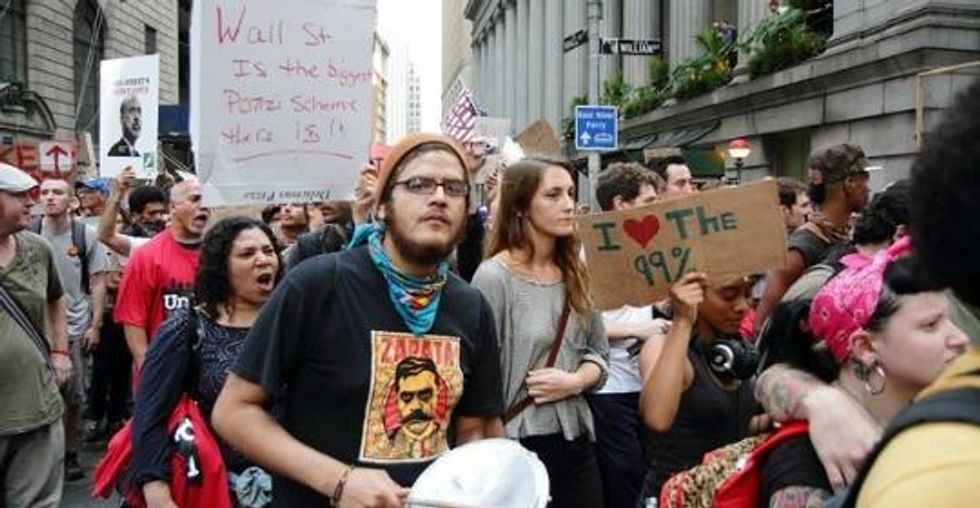The trouble with
trying to tell the story of Occupy Wall Street was that it was always a million things at once. You could go to one meeting, or one action, which might have seemed especially important, but there would be something else going on meanwhile that could just as easily be the next big thing. Each sub-thread of the story, each concurrent reality, made some kind of claim to be a genuine article, an authentic manifestation of what this movement was or should be all about. You needed a lot of eyes to see it all. You needed, perhaps, a social-scientific study.
As if in defiance of the general lack of curiosity about Occupy that tends to prevail these days, but in search of a better future for the movement's diasporic remnants, a group of the Occupy participants has been conducting a study to document the shape of the movement during the first half of 2012. This was after the cataclysmic eviction from Zuccotti Park, in fervent anticipation of a May Day that would come and go, holding an under-determined hope that the rupture might still grow. The name of the "draft of findings" report, being released this weekend, is fitting: Occupy's Precarious Pluralism.
Among the major findings of the study is the overwhelming emphasis of the various Occupy projects on "public communication" rather than particular issue-based campaigns. This is a valuable reminder of the ways in which the dominant nature of Occupy Wall Street was, generally speaking, one of a public performance rather than a platform for long-term organizing. And it was in precisely those terms that it was wildly successful -- "changing the conversation," putting wealth inequality on the discursive map, making "the 99%" and "the 1%" into universally recognized political signifiers.
There are other striking findings. One is that, despite the movement's reputation for revolutionary rhetoric, more of the groups within it were focused on seeking reforms of the existing system than were attempting to replace the system altogether -- though many reformers would probably have articulated their goals in revolutionary terms. The study also explores the ways in which the movement served as a locus and meeting point among existing organizations in New York City working on a variety of issues. In this sense, Occupy would be better understood as a place (and time) of convergence than as an organization onto itself.
Occupy, as a viral phenomenon replicated worldwide at will and whim, resisted boundaries between what it was and what it wasn't. What, for instance, does one make of the recent Talking Transition event in New York? A giant "tent" was erected by liberal foundations at a site Occupiers once coveted; there were drummers and open discussions about the city's future under the de Blasio administration. Occupy-ish, but safer -- as if a band of bureaucrats sought to reconstitute the parts they'd liked about Occupy Wall Street without the stuff they didn't. Like Precarious Pluralism, it remains to be seen whether this was (or was meant to be) merely a relic of the past or a step into the future.
In the meantime, though, the study is a worthwhile read -- an unusual and insightful example of activists taking a close, critical look at their own doings.
 The trouble with trying to tell the story of Occupy Wall Street was that it was always a million things at once. You could go to one meeting, or one action, which might have seemed especially important, but there would be something else going on meanwhile that could just as easily be the next big thing.
The trouble with trying to tell the story of Occupy Wall Street was that it was always a million things at once. You could go to one meeting, or one action, which might have seemed especially important, but there would be something else going on meanwhile that could just as easily be the next big thing.